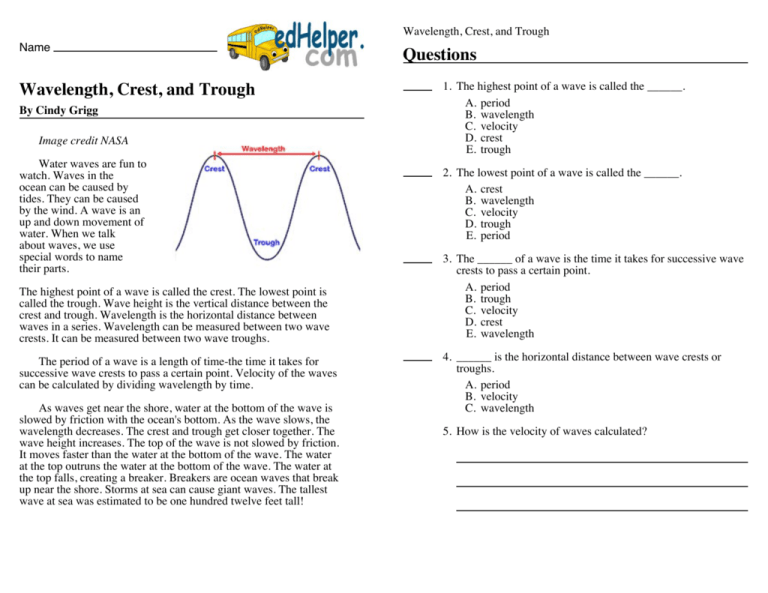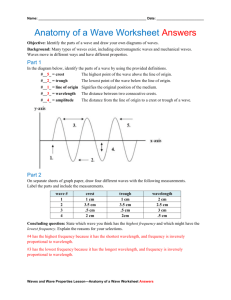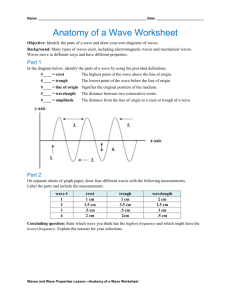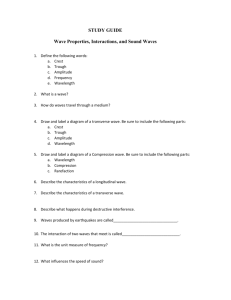Wavelength, Crest, and Trough Questions
advertisement

Wavelength, Crest, and Trough Name Wavelength, Crest, and Trough By Cindy Grigg Image credit NASA Water waves are fun to watch. Waves in the ocean can be caused by tides. They can be caused by the wind. A wave is an up and down movement of water. When we talk about waves, we use special words to name their parts. The highest point of a wave is called the crest. The lowest point is called the trough. Wave height is the vertical distance between the crest and trough. Wavelength is the horizontal distance between waves in a series. Wavelength can be measured between two wave crests. It can be measured between two wave troughs. The period of a wave is a length of time-the time it takes for successive wave crests to pass a certain point. Velocity of the waves can be calculated by dividing wavelength by time. As waves get near the shore, water at the bottom of the wave is slowed by friction with the ocean's bottom. As the wave slows, the wavelength decreases. The crest and trough get closer together. The wave height increases. The top of the wave is not slowed by friction. It moves faster than the water at the bottom of the wave. The water at the top outruns the water at the bottom of the wave. The water at the top falls, creating a breaker. Breakers are ocean waves that break up near the shore. Storms at sea can cause giant waves. The tallest wave at sea was estimated to be one hundred twelve feet tall! Questions 1. The highest point of a wave is called the ______. A. period B. wavelength C. velocity D. crest E. trough 2. The lowest point of a wave is called the ______. A. crest B. wavelength C. velocity D. trough E. period 3. The ______ of a wave is the time it takes for successive wave crests to pass a certain point. A. period B. trough C. velocity D. crest E. wavelength 4. ______ is the horizontal distance between wave crests or troughs. A. period B. velocity C. wavelength 5. How is the velocity of waves calculated? Draw a series of waves. Label the parts. Name Write five facts you learned about waves.







